
Atlantis is a fictional island mentioned in Plato's works Timaeus and Critias as part of an allegory on the hubris of nations. In the story, Atlantis is described as a naval empire that ruled all Western parts of the known world, making it the literary counter-image of the Achaemenid Empire. After an ill-fated attempt to conquer "Ancient Athens," Atlantis falls out of favor with the deities and submerges into the Atlantic Ocean. Since Plato describes Athens as resembling his ideal state in the Republic, the Atlantis story is meant to bear witness to the superiority of his concept of a state.

Lyon Sprague de Camp was an American author of science fiction, fantasy and non-fiction literature. In a career spanning 60 years, he wrote over 100 books, both novels and works of non-fiction, including biographies of other fantasy authors. He was a major figure in science fiction in the 1930s and 1940s.

Mu is a lost continent introduced by Augustus Le Plongeon (1825–1908), who identified the "Land of Mu" with Atlantis. The name was subsequently identified with the hypothetical land of Lemuria by James Churchward (1851–1936), who asserted that it was located in the Pacific Ocean before its destruction. The place of Mu in both pseudoscience and fantasy fiction is discussed in detail in Lost Continents by L. Sprague de Camp.
Lemuria, or Limuria, was a continent proposed in 1864 by zoologist Philip Sclater, theorized to have sunk beneath the Indian Ocean, later appropriated by occultists in supposed accounts of human origins. The theory was discredited with the discovery of plate tectonics and continental drift in the 20th century.
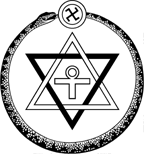
Root races are concepts in the esoteric cosmology of Theosophy. As described in Helena Petrovna Blavatsky's book The Secret Doctrine (1888), these races correspond to stages of human evolution, and existed mainly on now-lost continents. Blavatsky's model was developed by later theosophists, most notably William Scott-Elliot in The Story of Atlantis (1896) and The Lost Lemuria (1904). Annie Besant further developed the model in Man: Whence, How and Whither (1913). Both Besant and Scott-Elliot relied on information from Charles Webster Leadbeater obtained by "astral clairvoyance". Further elaboration was provided by Rudolf Steiner in Atlantis and Lemuria (1904). Rudolf Steiner, and subsequent theosophist authors, have called the time periods associated with these races Epochs.

Wall of Serpents is a collection of two fantasy short stories by American science fiction and fantasy authors L. Sprague de Camp and Fletcher Pratt, the third volume in their Harold Shea series. The pieces were originally published in the magazines Fantasy Fiction and Beyond Fantasy Fiction in the issues for June 1953 and October 1954. The collection was first published in hardcover by Avalon Books in 1960, with a new edition from Phantasia Press in 1978. The first paperback edition was published by Dell Books in 1979. A 1980 edition published by Sphere Books was retitled The Enchanter Compleated. An E-book edition was published by Gollancz's SF Gateway imprint on September 29, 2011 as part of a general release of de Camp's works in electronic form.
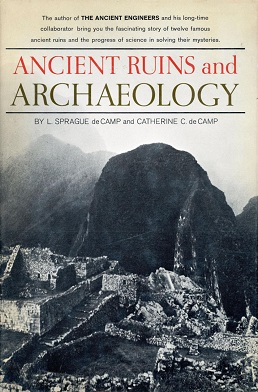
Ancient Ruins and Archaeology is a 1964 science book by L. Sprague de Camp and Catherine Crook de Camp, one of their most popular works. It was first published in hardcover by Doubleday in 1964, and reprinted under the same title by Barnes & Noble Books in 1992. The first British and paperback edition was issued by Fontana in 1972 under the title Citadels of Mystery, which was the de Camps' original working title; this title was retained by the first American paperback edition, issued by Ballantine Books in April 1973 and reprinted in February 1974. Translations into French, German and Portuguese have also appeared. Portions of the work had previously appeared as articles in the magazines Astounding Science Fiction, Fate, Frontiers, Natural History Magazine, Other Worlds Science Stories, Science Fiction Quarterly, and Travel.
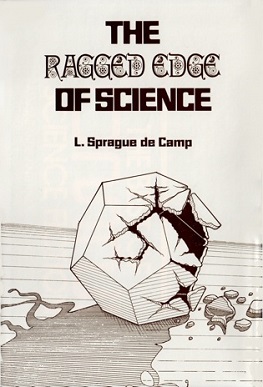
The Ragged Edge of Science is a science book by L. Sprague de Camp, illustrated by Don Simpson. It was first published by Owlswick Press in 1980.

The Undesired Princess is a 51,000 word fantasy novella by American writer L. Sprague de Camp. It was first published in the fantasy magazine Unknown Worlds for February 1942. It was published in book form by Fantasy Publishing Company, Inc. in 1951. The book version also includes the 10,000 word fantasy short story "Mr. Arson", first published in Unknown for December 1941. The book was bound together with Stanley G. Weinbaum's The Dark Other in the omnibus collection Fantasy Twin by the same publisher in 1953. The title story was also published in paperback by Baen Books in 1990 together with David Drake's story The Enchanted Bunny, under the combined title The Undesired Princess & the Enchanted Bunny.

Tales from Gavagan's Bar is a collection of fantasy short stories by American writers L. Sprague de Camp and Fletcher Pratt, illustrated by the latter's wife Inga Pratt. It was first published in hardcover by Twayne Publishers in 1953; an expanded edition rearranging the contents and adding pieces not in the first was published in hardcover by Owlswick Press in June 1978. The original illustrations were retained in this edition. It was subsequently issued in paperback by Bantam Books in January 1980. An e-book edition was published by Gollancz's SF Gateway imprint on September 29, 2011, as part of a general release of de Camp's works in electronic form. The collection has also been published in German.

The Tritonian Ring and Other Pusadian Tales is a 1953 collection of stories by American science fiction and fantasy author L. Sprague de Camp, first published in hardcover by Twayne Publishers. An E-book edition was published as The Tritonian Ring and Other Pasudian [sic] Tales by Gollancz's SF Gateway imprint on September 29, 2011 as part of a general release of de Camp's works in electronic form. The pieces were originally published between 1951 and 1953 in the magazines and anthologies Two Complete Science Adventure Books, Fantasy Fiction, Imagination Stories of Science and Fantasy, and Fantastic Adventures. The title story, the novel The Tritonian Ring has also been published separately.

The Continent Makers and Other Tales of the Viagens is a 1953 collection of science fiction stories by American writer L. Sprague de Camp, the fifth book in his Viagens Interplanetarias series. It was first published in hardcover by Twayne Publishers, and in paperback by Signet Books in 1971 with a cover by illustrator Bob Pepper. An E-book edition was published by Gollancz's SF Gateway imprint on September 29, 2011 as part of a general release of de Camp's works in electronic form. It has also been translated into Portuguese, Dutch, and Italian. The pieces were originally published between 1949 and 1951 in the magazines Astounding Science-Fiction, Startling Stories, Future Combined with Science Fiction, and Thrilling Wonder Stories.
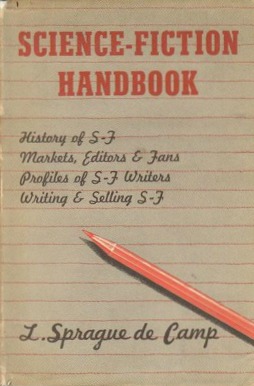
Science-Fiction Handbook, subtitled The Writing of Imaginative Fiction, is a guide to writing and marketing science fiction and fantasy by L. Sprague de Camp, "one of the earliest books about modern sf." The original edition was published in hardcover by Hermitage House in 1953 as a volume in its Professional Writers Library series. A revised edition, by L. Sprague de Camp and Catherine Crook de Camp, titled Science Fiction Handbook, Revised, was published in hardcover by Owlswick Press in 1975 and as a trade paperback by McGraw-Hill in 1977. An E-book version of the revised edition was published by Gollancz's SF Gateway imprint on April 30, 2014.

The Pusadian series is a sequence of fantasy stories by L. Sprague de Camp, begun in the early 1950s and written under the influence of Robert E. Howard's Conan stories. The series, also known as the Poseidonis series, prefigured the numerous sword & sorcery settings of the 1960s and 1970s.

The Tritonian Ring is a heroic fantasy novel written by L. Sprague de Camp as part of his Pusadian series. It was first published in the magazine Two Complete Science Adventure Books for Winter, 1951, and first appeared in book form in de Camp's collection The Tritonian Ring and Other Pusadian Tales. Its first publication as a stand-alone novel was as a paperback by Paperback Library in 1968; the first hardcover edition was from Owlswick Press in 1977. An E-book edition was published as The Tritonian Ring and Other Pasudian [sic] Tales by Gollancz's SF Gateway imprint on September 29, 2011 as part of a general release of de Camp's works in electronic form.
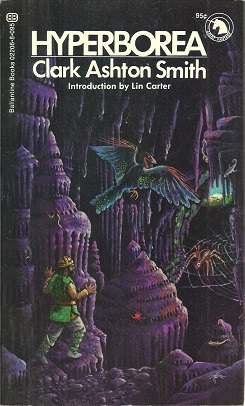
Hyperborea is a collection of fantasy short stories by Clark Ashton Smith, edited by Lin Carter. It was first published in paperback by Ballantine Books as the twenty-ninth volume of its Ballantine Adult Fantasy series in April 1971. It was the second themed collection of Smith's works assembled by Carter for the series. The stories were originally published in various fantasy magazines from the 1930s to the 1950s, notably Weird Tales.
A lost continent is land supposedly existing during prehistory that has since disappeared.

The Viagens Interplanetarias series is a sequence of science fiction stories by L. Sprague de Camp, begun in the late 1940s and written under the influence of contemporary space opera and sword and planet stories, particularly Edgar Rice Burroughs's Martian novels. Set in the future in the 21st and 22nd centuries, the series is named for the quasi-public Terran agency portrayed as monopolizing interstellar travel, the Brazilian-dominated Viagens Interplanetarias. It is also known as the Krishna series, as the majority of the stories belong to a sequence set on a fictional planet of that name. While de Camp started out as a science fiction writer and his early reputation was based on his short stories in the genre, the Viagens tales represent his only extended science fiction series.

Thongor of Lemuria is a fantasy novel by American writer Lin Carter, the second book of his Thongor series set on the mythical continent of Lemuria. It was first published in paperback by Ace Books in 1966. The author afterwards revised and expanded the text, in which form it was reissued as Thongor and the Dragon City, first published in paperback by Berkley Books in 1970. This retitled and revised edition became the standard edition for later reprintings.
















